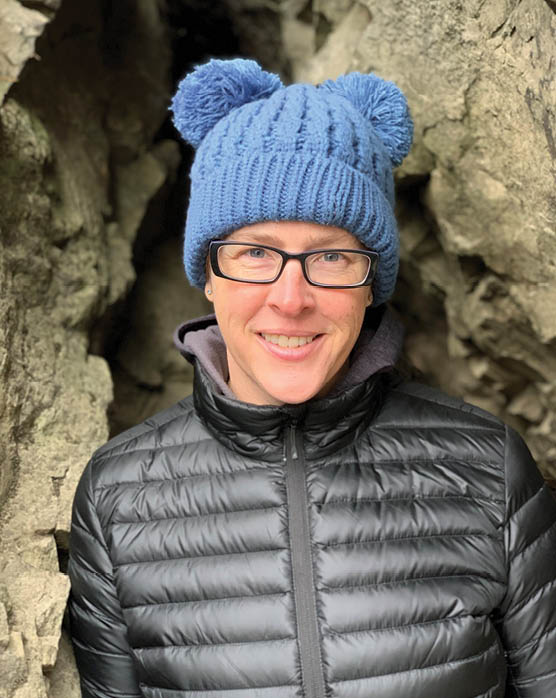What I Learned in the Classroom

During my last nine years in the classroom, I had the honor of being the first teacher for our immigrant and refugee students in the Newcomer Center at Joel E. Ferris High School in Spokane, WA. My students shouldered the burden of transitioning to learning and studying in the United States with the expectation that they complete high school with limited English language proficiency—only four short years after arriving here. Yet, these students were the most intrinsically motivated and respectful in my 21-year teaching career, and most of them achieved the goal of graduating on time.
According to the UN Refugee Agency, war, persecution, and violence displaced 71 million people in 2018. This is 2 million more than the year before, and a 65% increase over the last decade. By 2050, 140 million more people will face the same fate due to climate change. Displacement is a global crisis, and 52% of those displaced are children. As a result, children on the move have missed, at last count, 1.5 million weeks of school. The COVID-19 pandemic has only increased these numbers. Because of mass displacement, 1 in 10 students are English learners.

High School in Spokane, WA.
In Spokane, we serve more than 75 different language groups. My classroom was always a mix of students who spoke multiple languages and represented several cultural groups. It was a warm, safe environment in which students learned foundational English language skills and became confident in navigating their new school environment. Through an asset mindset, I focused instruction on accessing and honoring the skills and knowledge students brought with them, celebrating their cultures, and learning about the expectations and systems within their new school and community.
The challenges my students faced were numerous. As new immigrant and refugee students, the biggest obstacle was the school system itself. As their teacher, I recognized that many of the processes we took for granted were not intuitive for my students. One example of a barrier for new English learners involves navigating the cafeteria. While the nutrition services workers in my school had a basic knowledge of the dietary restrictions of my students, there was little understanding of the deeper cultural reasons for these restrictions. The issue came to a head when two new students who were devout Muslims and had only been attending school in the U.S. for one month ate what they thought was cheese pizza but had pepperoni hidden beneath the cheese. When the students discovered the pepperoni, they broke down and could not participate in the rest of the day’s learning because they were devastated that they had consumed pork.
My students also ran into problems with the limits on fruit (because students’ entrée choices were limited, they’d often try to take more than their allotted amount), the payment system, and the cafeteria’s structures. These issues extended to the business office and how to navigate money in school, as well as the student office when students needed to check in, check out, or see the school nurse. None of these processes were clear, nor did my students have the background knowledge to figure them out themselves. Additionally, teachers and support staff lacked cultural understanding or training in culturally responsive practices.
Celebrating Student Success
This brings me to our successes. Despite my students’ English language proficiency level, the majority graduated on time, within four years of their arrival in the U.S. Part of their success was their motivation, but also the security the Newcomer Center provided them during that first semester within the school system. Because of the confidence students gained through the program, they were more willing to take academic risks as they moved through our sheltered English language development program and into general education classes. Students also had the confidence to participate in social events, sports, and other clubs and opportunities throughout the school.
We built a supportive and welcoming environment for English learners by focusing on creating connections between our English learners and our students who were born and raised in the U.S. We accomplished this intentionally through cross-class learning and social opportunities that uplifted our immigrant and refugee students as culture experts, while also providing English practice with native speakers of English. Our school capitalized on the strengths of our English learners by providing opportunities for them to be language experts in world language classes, and through all school activities such as SOAR (Sharing Our Amazing Roots), in which students across the school shared their gifts and talents with one another.
Through these activities and opportunities, students also learned self-advocacy. Beginning in the Newcomer program and extending past it, students built the skills to advocate for themselves with their teachers and with other school staff, like counselors and administrators, to push for what they needed within their classes and across the school. One student advocated for additional support in planning for and moving through the college admissions process. This student, alongside several other students, took that advocacy all the way to the state legislature, where they testified on behalf of English learners across the state. All of this started with creating a welcoming environment in which all staff members viewed English learners through their assets.
We know that a significant factor in student success is access to highly effective educators. For English learners, educator quality is even more critical. Often when we talk about educator effectiveness and quality, we are referring to certifications and years of experience. While those factors are essential, it is even more important that educators who work with immigrant and refugee students have a deep understanding of and experience in implementing culturally responsive practices.
What School Leaders Can Do
To ensure educators have the skills and knowledge to address student culture, school leaders must provide adequate training. One reason why educators have a limited understanding of culturally responsive practices is the lack of professional development that specifically addresses the importance of understanding culture in working with English learners. In the cafeteria example I mentioned earlier, teachers and school staff needed training to meet our students’ needs and to understand the cultures they represented in our English learner population. In my school, English language specialists provided this training to the school staff with the help of our students, who shared presentations on their cultures and learning preferences.
The final element in addressing the cafeteria issue was advocating to make a change that would aid in rectifying the problem across the system. To make equitable systemic changes, stakeholders—most importantly administrators—must be willing to be vocal advocates on behalf of the needs of English learners in their school environments, at the building level, and at the district and school board levels. In our case, English language teachers advocated at the district and school levels to label all foods with their content. The labels had to be pictorial and in words to provide access to students at all levels of English proficiency. This change then had to spread across the district. The English language teachers also had to incorporate practices that would help students navigate the cafeteria and communicate their needs to nutrition services workers.
There are larger systemic issues as well, such as standardized testing and lack of culturally responsive assessment practices in schools. Just as teachers need to be culturally responsive within their classrooms, schools must have culturally responsive practices in place to create a total environment that is welcoming and honors and incorporates the cultures of their student body. School leaders must implement professional development in culturally responsive practices that is ongoing and includes the expertise of the English language educators within their community, as well as student voice and experience. Moreover, education leaders should create flexible systems to build relationships with immigrant and refugee families and create opportunities for two-way communication. Home visits are a wonderful place to start.
School leaders must be committed to making whole-school transformations so that students are viewed through an asset-based lens and school staff are provided opportunities to explore and confront their own biases. The process will not be smooth. There will be resistance and bumps along the way, but the results will be a school environment that uplifts, honors, and welcomes every student.
Mandy Manning is a digital content specialist for the Washington Education Association and a co-author of Creating a Sense of Belonging for Immigrant and Refugee Students: Strategies for K–12 Educators. Previously, she taught English to newly arrived refugee and immigrant students in the Newcomer Center at Joel E. Ferris High School in Spokane, WA. She was named the 2018 National Teacher of the Year by the Council of Chief State School Officers.
